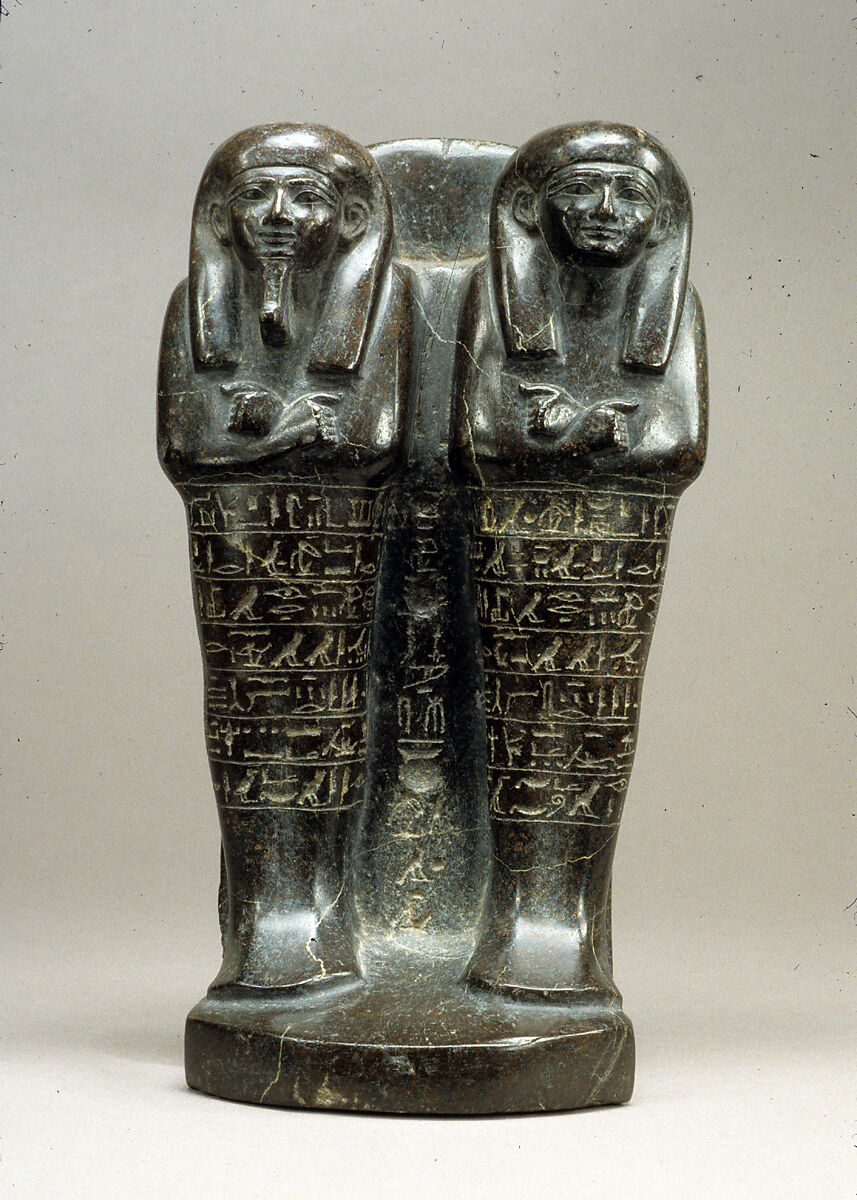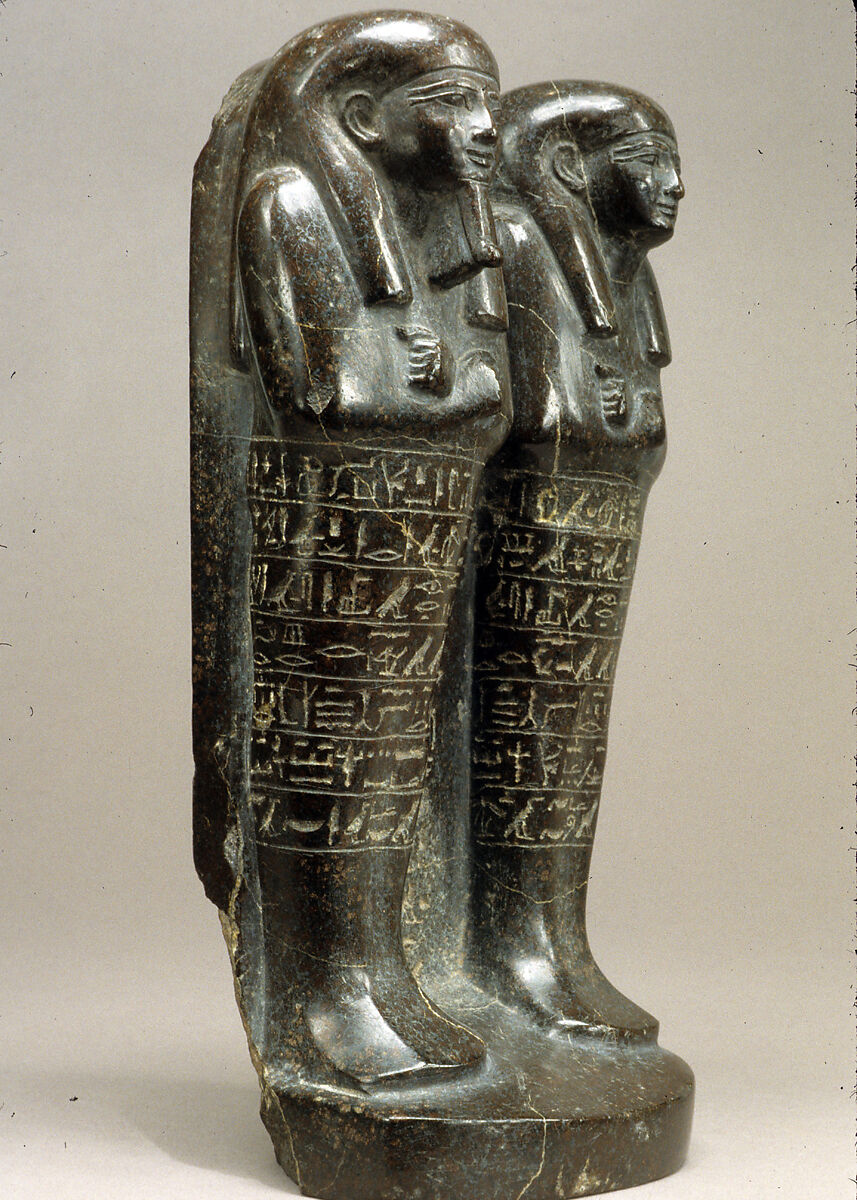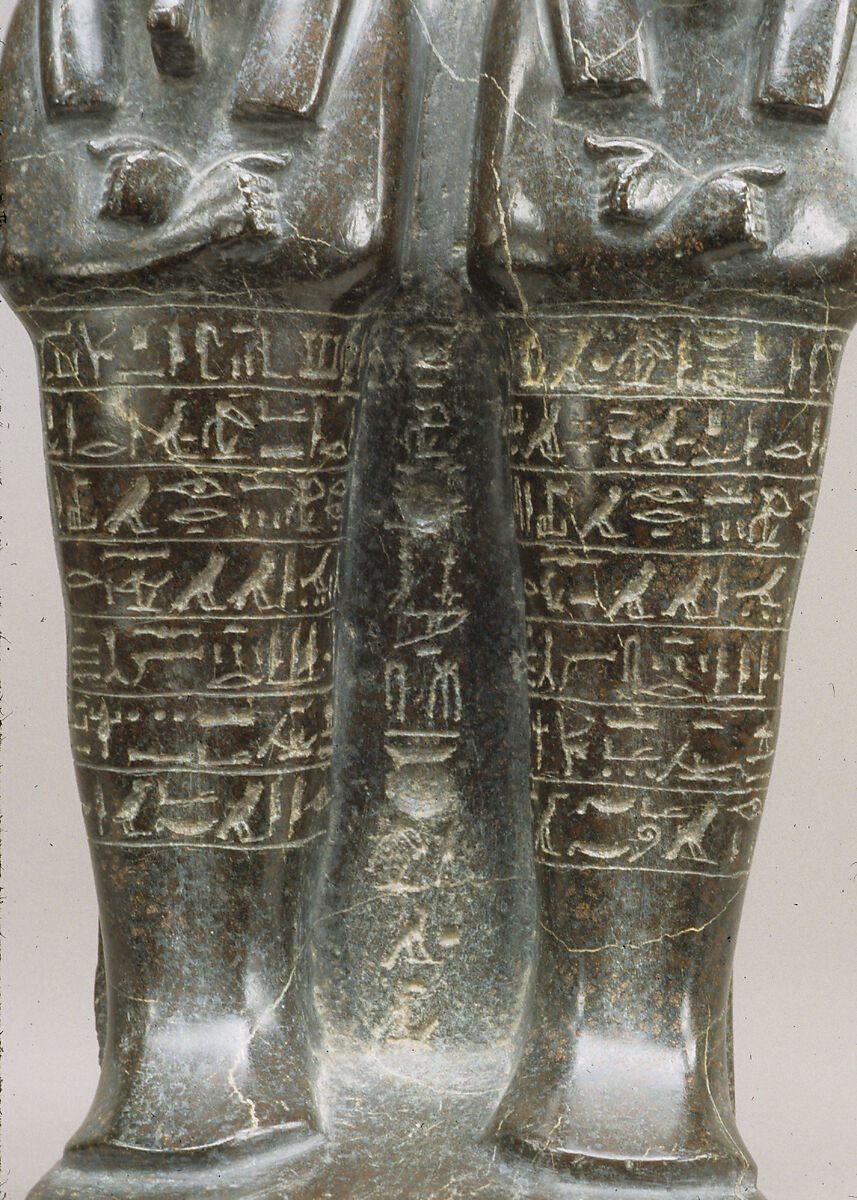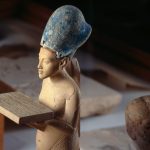Double Ushabti of Benermerut and His Mother, Ikhem

Double Ushabti of Benermerut and His Mother, Ikhem
New Kingdom, 18th Dynasty, Reign of Thutmose III (ca. 1478–1425 B.C.)
This remarkable double ushabti depicts Benermerut and his mother, Ikhem, standing side by side in a unified composition — a rare representation that highlights familial devotion in the afterlife.

Shabtis—also known as ushebtis or shawabtis—were small funerary figurines in ancient Egypt, created to serve the deceased in the afterlife. The term shabti comes from the ancient Egyptian word Swb (“stick”), though it was later reinterpreted as wSb (“answer” or “respond”) during the first millennium BCE. These figures were inscribed with a magical spell known as the Shabti formula, which commanded them to perform any laborious tasks required of their owner in the afterlife.

During the New Kingdom (c. 1550–1069 BCE) and the Late Period (c. 664–332 BCE), shabtis were made of materials such as stone, wood, or faience. Their bodies typically took the form of mummies, though examples from the late Eighteenth Dynasty show figures dressed in everyday attire. Most shabtis held agricultural tools—such as hoes, mattocks, or baskets—symbolizing their role as workers for the deceased.












